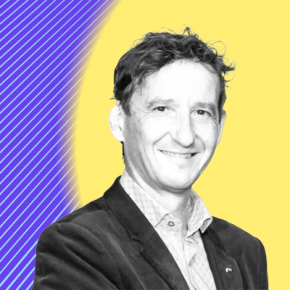"The environmental transition is a strategic opportunity for the CNRS"
To facilitate the implementation of its environmental transition plan and provide ongoing support for this, the CNRS recently appointed a scientific officer for sustainable development and risks. Stéphane Guillot explains the challenges of his new role.
You have been recently appointed as the CNRS's scientific officer for sustainable development and risks. Why did the organisation choose to have a scientific authority in this field?
Stéphane Guillot[1]: Like all French higher education and research organisations, the CNRS will present its roadmap on sustainable development and corporate social responsibility by the end of this year. The roadmap will be incorporated into our Objectives, Performance and Resources Plan to be in full compliance with the Paris Climate Agreement. From the word go, the CNRS has chosen to base its approach on the very basis of its DNA - science. For that reason, the environmental transition at the CNRS is being led by our Scientific Office (DGDS).
Our aim is to involve all CNRS staff members in a collective adventure to drive the environmental transition. This is a major issue for the CNRS! And although I really feel that most CNRS staff members buy into and this low carbon transition project, it still needs to be implemented. This will have to be strongly driven at the national scale to structure the CNRS's scientific policy.
At the CNRS I have experience of varied research practices over the years spent as a researcher working with geochemists and geophysicists in France and abroad and also as a unit director, member of the National Committee, deputy scientific director of CNRS Earth & Space and a member of our Mission for Transversal and Interdisciplinary Initiatives (MITI). I have experience of several facets of the research sphere and so I believe myself capable of understanding and sharing the concerns of CNRS research staff, engineers, technicians and researchers alike. Therefore when the Deputy CEO for Science, Alain Schuhl, offered me this job, I was happy to accept with enthusiasm.
What will your missions be and how will you combine risks and sustainable development?
S. G.: Sustainable development and risks are two sides of the same coin and I would sum them up in terms of mitigation and adaptation. Climate change means we need to reduce our carbon footprint in our private and professional lives. This means more sobriety in how we travel, eat or purchase and professionally in general. This is mitigation. At the same time, we must also mitigate our impact on biodiversity by limiting the use of plastic in our experiments or chemicals that pollute the most.
However, our efforts and new way of consuming and working will not bear their fruits for several decades because the cycle of greenhouse gases in the Earth's atmosphere is long, with the half-life[2] of CO2 lasting around 150 years. Our societies will need to continue to adapt to new conditions that will also produce an increase in climate risks and more extreme events like floods, storms, landslides and so on.
This makes my mission twofold and complementary. I'll be working with the CNRS's sustainable development unit in support of our General Management to propose new research practices to help mitigate our environmental impact. Secondly, within the CNRS and with the management of our Institutes, I'll be organising research methods designed to manage and mitigate natural risks (processes, anticipation, training, crisis management) for public sector decision-makers like ministries, prefectures or local authorities.
How does your post dovetail with the network of sustainable development officers at the CNRS Institutes and regional offices? Also, how does it fit into the governance of the CNRS?
S. G.: My role is positioned under the authority of the DGDS within the Sustainable Development Committee and I also work closely with our Transversal Steering Support Mission (MTAP). In this role, I work with the directors of the ten CNRS Institutes and their sustainable development officers, as well as with the MITI and the CNRS Research Infrastructures Department. More specifically, we'll be coordinating the transformation of research practices drawing on the ongoing thought process underway as a part of our Institutes' foresight studies. So in this context, I plan to organise a monthly meeting with the Institutes' officers in this field to discuss the best practices emerging from our research labs and also issues linked to the the use of plastics, repairing instruments and tools and any other practices that will help drive a sustainable approach to research careers at the CNRS.
My impression is that research personnel have high expectations for enhanced and increased sobriety and yet sustainable development should not be reduced to mitigation alone. Adapting to new environmental conditions means we need to go further and invent solutions that don't even exist yet. The very essence of research is to explore new horizons. We need to show boldness and innovation to make sure the environmental transition turns into a strategic opportunity for the CNRS.
